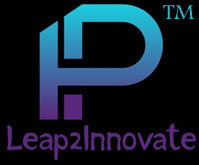Patent to Product Mapping
Broadly speaking patent to product mapping assigns a true value to a patent. Marketable products form the crux of any business and with product mapping there is an improved possibility to maximise returns on investments.
It helps streamline future R&D investments and prune the in-house portfolio by determining which patents possess greater value in comparison with the key competitors in similar emerging technologies. The process also widens the business portfolio by establishing a link between the technology owned and the products that can be brought to market. Having this fortified link between the IP and its business value certainly paves way for enhanced future innovation.
To retain claims that possess revenue potential and discard those that don’t, it is important to execute this step during patent prosecution. Mapping not only helps link one’s patents to one’s own products but also to those of a third party.

It also maps third party patents to one’s own products and aids to contrive methods to prudently utilise limited resources. The value of mapping lies in the fact that typically while developing new ideas, most inventors remain focused on the technicalities and not their real-world commercial applications as specific manufacturable products. This could simply be due to an absence of any current use for such technology and this incongruous relationship between patent creation and product development can cost a company future patents and consequent financial gain. By establishing a clear link between patents and products, it’s possible to improve and substantiate existing capabilities to fully exploit one’s IP space. However, given the challenging nature of this process, it’s not always possible to directly connect a patent to a product. Alternatively, inventors can opt to trademark their service or design, thereby establishing them as being proprietary to their company. This systemizes the scope of patent to trademark associations and helps understand which patents can be leveraged to protect one’s products. Mapping also helps mitigate future infringement risks by identifying product spheres of competitors who are using similar technology and if third party product development strays into areas of one’s own key patenting technology.
Another notable advantage of patent mapping is one that is provided by semantic mapping. Given the ever-increasing number of patents within the same technological domain, it’s easy to infringe on another’s rights by use of similar terminology while describing key concepts of a patent. In modifying these, one can more successfully defend and retain their patenting rights.
With this perspective on IP and the different ways of exploiting them, it becomes imperative that product mapping be incorporated as a key feature of patent portfolio management.

